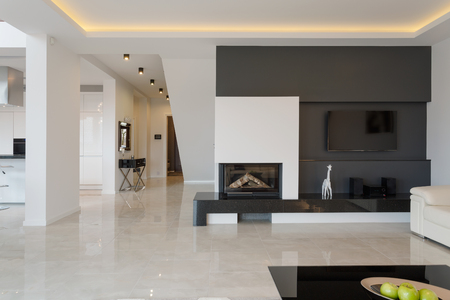When most people think about entertaining at home, their minds turn to cozy winter gatherings or summer barbecues. But in Las Vegas, entertaining isn’t tied to just one season. Thanks to the desert climate and a culture that embraces both indoor and outdoor living, many homeowners in Southern Nevada enjoy hosting family, friends, and neighbors […]

Interior design has many different types of styles. From Hollywood Glam to Rustic, there are many designs in which we can pull inspiration. Many styles have evolved over the years and became trademarks to the stylings that we incorporate in our homes and businesses today. Some designs have come and passed, and others are still being created. Some designs have even meshed together to create something new and unique. For example, Traditional Design is a very classical look yet when mixed with modern; it finds a balance in the transition of eras. We refer to this design style as Traditional. Yet what is Modern Design? Many people use the term Modern and Contemporary Design interchangeably; however, they are two very distinct, different styles. We will explore both designs so you can decide which one may be best for you. Both have advantages, disadvantages, and personal preferences which allows them to be unique to you. Join us as we explore what makes a mid-century modern home and check out what creates a contemporary home for more details.
Mid-Century Modern
So, first, we need to understand that “Modern” does not mean “as of today.” Modern design refers to a time era in design that has come and passed. Because of this, it cannot continue to change. The rules and guidelines to this style are pretty set in stone. Mid-Century modern was established in the 1930s-1960s, and it was used in architecture, industrial, interior, and even marketing. This design happened right after World War II when families began to move from the more rural area to live in more urban neighborhoods. This change correlated with smaller homes and with it came an adaptation to make a style that worked. With smaller spaces, people still wanted to have their home’s feel big, which meant minimalism, simplicity, functionality, and an open layout were a must. Modern homes would typically have a neutral color palette yet could add color through muted tones. Most of the lines in the architecture would be sleek and clean cut. To make the homes feel more open, geometrical, crisp furniture was introduced. Materials were entering the market during this time which made plastics, glasses, metals, and woods all valid options to use in this design.
Now that you can identify Modern design, it is essential to see what makes Contemporary design different. Check out Part Two for a greater understanding. For more insight on design themes and differences, make sure to subscribe to our content!